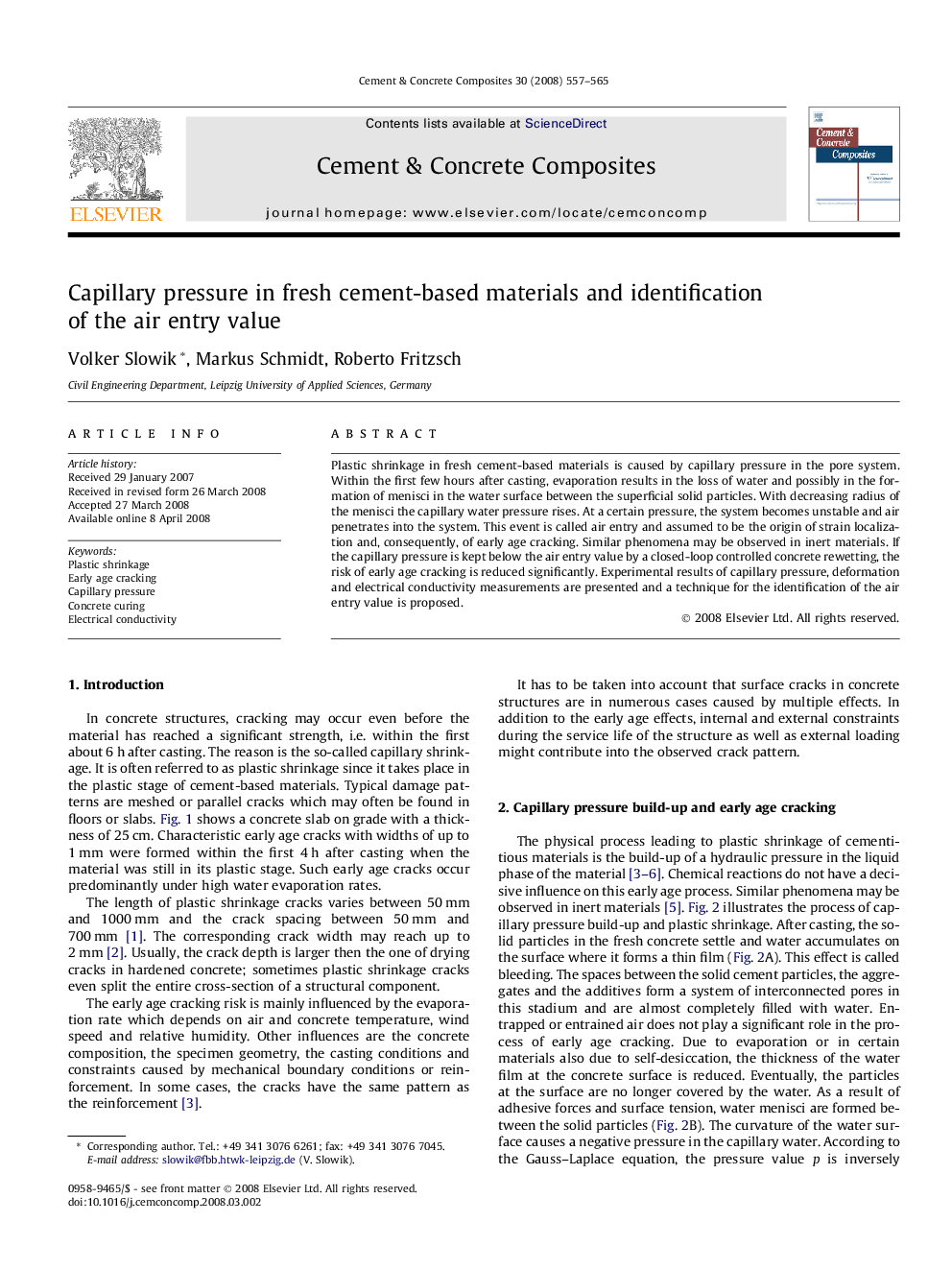| Article ID | Journal | Published Year | Pages | File Type |
|---|---|---|---|---|
| 1455581 | Cement and Concrete Composites | 2008 | 9 Pages |
Plastic shrinkage in fresh cement-based materials is caused by capillary pressure in the pore system. Within the first few hours after casting, evaporation results in the loss of water and possibly in the formation of menisci in the water surface between the superficial solid particles. With decreasing radius of the menisci the capillary water pressure rises. At a certain pressure, the system becomes unstable and air penetrates into the system. This event is called air entry and assumed to be the origin of strain localization and, consequently, of early age cracking. Similar phenomena may be observed in inert materials. If the capillary pressure is kept below the air entry value by a closed-loop controlled concrete rewetting, the risk of early age cracking is reduced significantly. Experimental results of capillary pressure, deformation and electrical conductivity measurements are presented and a technique for the identification of the air entry value is proposed.
